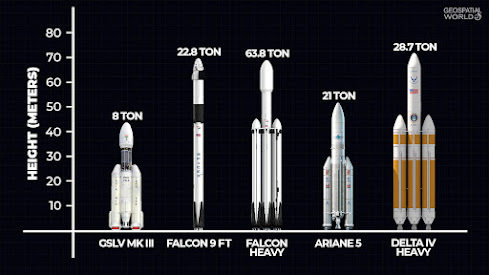Explained: Why Chandrayaan-3 Needs Over 40 Days to Reach the Moon While NASA's Apollo 11 Took Only 4
Space exploration has always been a fascination for humankind, and over the years, various countries and space agencies have embarked on ambitious missions to explore the vastness of space. In the realm of lunar exploration, both India and the United States have made significant strides. The Indian Space Research Organisation (ISRO) has been at the forefront with its Chandrayaan missions, while NASA's Apollo program achieved the historic landing of humans on the Moon. One might wonder why Chandrayaan-3, a mission to the Moon, takes over 40 days to reach its destination, while Apollo 11, NASA's groundbreaking mission, that happened 54 years back, reached there in just 4 days. In this blog post, we will explore the factors that contribute to this difference in travel time and the unique characteristics of each mission.
1. Orbital Mechanics and Trajectory:
The primary reason for the difference in travel time lies in the trajectories and orbital mechanics used by the two missions. Apollo 11 utilized a technique called a "free-return trajectory," taking advantage of a specific alignment between Earth and the Moon (A sling shot like trajectory). This trajectory allowed the spacecraft to fly around the Moon and return to Earth without using significant amounts of fuel, thus reducing travel time. On the other hand, Chandrayaan-3 chooses a different trajectory (including multiple stages of orbital burns) to optimize fuel consumption and achieve its scientific objectives, leading to a longer travel time.
2. Launch Vehicle Capability:
Another crucial factor is the capability of the launch vehicle used for the missions. Apollo 11 was launched using the Saturn V, one of the most powerful rockets ever built. Its immense thrust allowed the spacecraft to reach the Moon quickly. In contrast, Chandrayaan-3 may be launched using ISRO's GSLV Mk III or another suitable launch vehicle, which might not have the same level of thrust as the Saturn V. As a result, it will take longer for the spacecraft to build up the required velocity to escape Earth's gravitational pull.
3. Mission Objectives:
The objectives of the missions also influence the travel time. Apollo 11 had a clear objective of landing humans on the Moon and returning them safely to Earth. Therefore, the mission was designed to reach the Moon quickly to conserve resources and ensure the crew's safety. Chandrayaan-3, on the other hand, might have different scientific objectives, such as detailed lunar mapping, mineralogical analysis, and studying the Moon's atmosphere. Achieving these objectives might require a more intricate approach, necessitating a longer travel time.
4. Technology and Instrumentation:
Advancements in technology have also played a significant role in reducing travel time for space missions. The Apollo program benefited from cutting-edge technology available at the time, while Chandrayaan-3 will utilize the latest advancements in space technology. The choice of propulsion systems, navigation methods, and communication technologies can influence the overall mission duration.
5. Mission Planning and Execution:
The process of planning and executing a space mission involves numerous considerations and trade-offs. Factors like launch windows, trajectory planning, mid-course corrections, and mission operations can all affect the travel time. Mission planners carefully analyze various possibilities to optimize the mission's success while considering resource constraints and risks.
Conclusion:
While both the Apollo 11 and Chandrayaan-3 missions represent remarkable achievements in the realm of lunar exploration, their differences in travel time can be attributed to various factors, including orbital mechanics, launch vehicle capabilities, mission objectives, technology, and mission planning. Each mission is unique in its own right and tailored to accomplish specific scientific and exploratory goals. As we continue to explore the cosmos, these missions serve as beacons of human ingenuity and curiosity, pushing the boundaries of space exploration for the benefit of all humanity.





bruh
ReplyDelete